On-page SEO deals with all the Google’s ranking factors that a website owner controls because they happen within the same domain, such as content, page structure, internal links, metadata, schema, internal anchor texts, among many others.
Here’s the harsh truth: If you fail at On-page SEO, you have a difficult time ranking your website and its pages in Google top organic pages, regardless of the number of backlinks you get.
There are three main categories of on-page SEO which you’ll need to pay attention to. The first and most critical is content.
1). Content
You’ve probably heard the saying over and over again that “Content is king.” Bill Gates predicted this in 1996, and it’s still very accurate today even as I write this piece.

Why is content so important on the web?
Because anyone looking for anything on Google will be happy to find informative and relevant content that answers their questions.
When you search on Google for “permission-based marketing,” Google will do everything possible to deliver to you what it believes to be the best result for that search query.
It doesn’t look for the quickest result, the easiest guide, or just throw out a bunch of mediocre content on the subject.
Google’s aim is to deliver the best search experience by directing users to the most comprehensive and informative content it can find.
That means your number one priority for on-page SEO is to produce great content:
- 100% original content.
- Well-detailed and practicable.
- Well-research and grammatically correct.
- Visually-appealing and easy to read.
If that’s not enough, here are some of the various factors that make up great content that Google loves:
a). Content Quality: Content will always be the starting point for any successful SEO campaign.
But writing great content is never easy; it means you have to become an outstanding teacher in your industry.
However, you don’t have to do it from scratch. This guide by Okdork covers everything on how to create great content by simply piggybacking on what other people have done.
You probably have your own ideas already; it’s now time to brainstorm for the right format, and then come up with a magnetic headline that will hook people.
The moment you start creating content, ensure you include all the essential ingredients that make for a truly remarkable content.
b). Keyword Usage: Google has become smarter in recent times. While it’s advisable to use your keyword throughout your blog post, carelessly stuffing keywords into your content will wound up hurting your rankings, rather than improving them.
Keyword stuffing is a no-no in search engine optimization.
Starting in 2015, the use of keywords was more about semantics. It’s all about context and what a search query truly represents. Google has become very smart at interpreting the meaning of every keyword used by web searchers.

Now, as long as you strategically include your keyword in strategic places (like URL, headline, and meta description), it’s useless to still mention it several times in your article body. Especially if the keyword doesn’t read naturally.
Your primary focus should be on the reader, and how you can address the keywords they frequently use in their searches.
Do you know how to create useful and compelling content? That’s a mouthful. The good news is that I can show you how to do it. But before then, let’s see some examples.
Great content vs. Low-quality content
You’re advised to produce quality content, right? Well, the word “quality” is relative and has no definite definition. For example, what I perceive as a quality content might look crappy to you.
But there’s great content. Here’s how to recognize it:
- It’s well-researched
- It’s well-organized
- It targets and address a specific keyword
- It has an attractive title and persuasive content
- It contains relevant and high-quality visuals (e.g., screenshots, graphs, charts)
- It’s actionable
- It’s data-driven
- It’s detailed.
Note: A great content doesn’t have to be 3000+ words all the time. It can be 1000 words, but full of insights and actionable ideas.
Here’s an example of great content from that possesses the attributes above:

A low-quality content, on the other hand, lacks the attributes of a great content. Worse, it’s hard to read and implement. Here’s an example of a low-quality crappy content that offers no value:
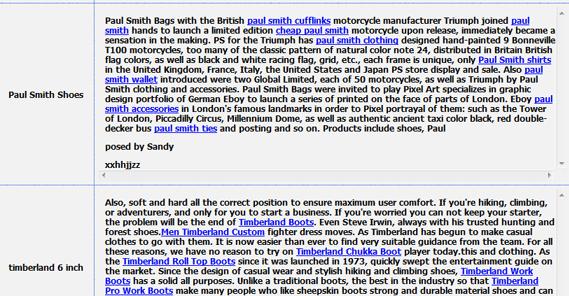
Invest your time and money to produce great content consistently. Don’t try to take shortcuts and don’t use spun content; like the screenshot above. Crappy content kills conversion rate and it’s the quickest way to get penalized by Google.
What are the types of content you can create?
Search engines crawl and index all types of content. So, producing a variety of content is one of the ways to get organic search traffic and rankings.
More so, a topic or keyword could be competitive because there are more people creating one type of content. If you choose to create a different type of content, you have a better chance of ranking on Google’s first page.
Here are some of the content types you can create:
a). Blog Posts and Articles: If you’re not familiar with these types of content, they’re mostly the same. They’re written to address a particular topic/keyword. There are more articles and blog posts on the internet than videos and other content types. They’re much easier to create and requires no expensive equipment or tool.
Here’s an example of a valuable blog post:
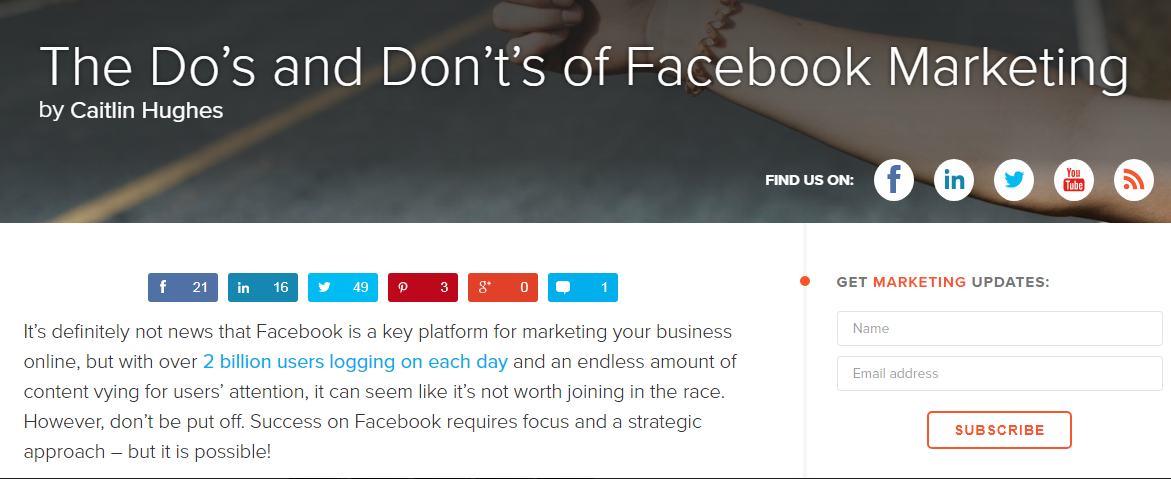
b). Long-form guides: What you’re reading right now is a long-form comprehensive guide. It addresses every important topic there is for a particular subject. It’s the best form of blog posts and articles, and quite easier to promote on social media because people love to share in-depth guides.
c). Videos: You have seen videos on YouTube. You can create yours too. There are topics that do well with tutorial videos such as “how to” topics. For example, how to knot a tie. You can’t possibly show the steps in a written article, hence, creating a short but impactful video is all you need.
d). Podcasts: Audio content has grown in popularity over the past 4 years. John Lee Dumas, founder of Entrepreneur On Fire generates over $200,000 per month from podcast sponsorships. People love to listen to podcasts while driving, relaxing, or hanging out with friends.
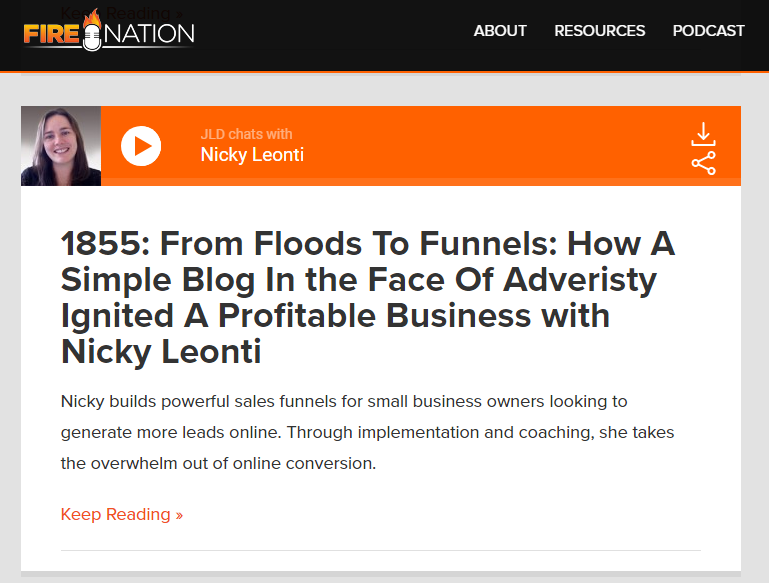
They don’t have to watch a video or read an article, only to tune in and enjoy their favorite podcast episode. Creating a podcast channel is easy on iTunes, but you need to spend some money to buy all the equipment needed to make your podcasts great.
e). Infographics: This is a form of visual content, but this time you’re presenting your information in a graphical form. Neil Patel generated over 100,000 visitors to his consulting business through Infographics distribution. You can learn how to design an infographic or hire a professional at Dribbble, Visually, or Upwork. Here’s an excerpt from a well-designed infographic:

f). Animated Gifs:This type of content can create that memorable feel for your articles and blog posts. Include an animated gif or meme into your blog post and watch the engagement level soar.
g). PDF reports: Search engines recognize PDF documents and rank them. So you need to create more of them. Ideally, repurpose some of your articles into PDF guides and start distributing them. You’ll notice that when people are looking for PDF documents that are relevant to your topic — your page can show up high in the organic listings.

h). Whitepaper:B2B companies and marketers use white papers to build their email list and start the relationship building process.
A whitepaper is basically a PDF report that educates potential clients on their challenges, the solutions they can get, and the product that can help them. If you’re marketing to businesses, consider creating more white papers. Marketo’s white papers are some of the best in the industry. Take a look:
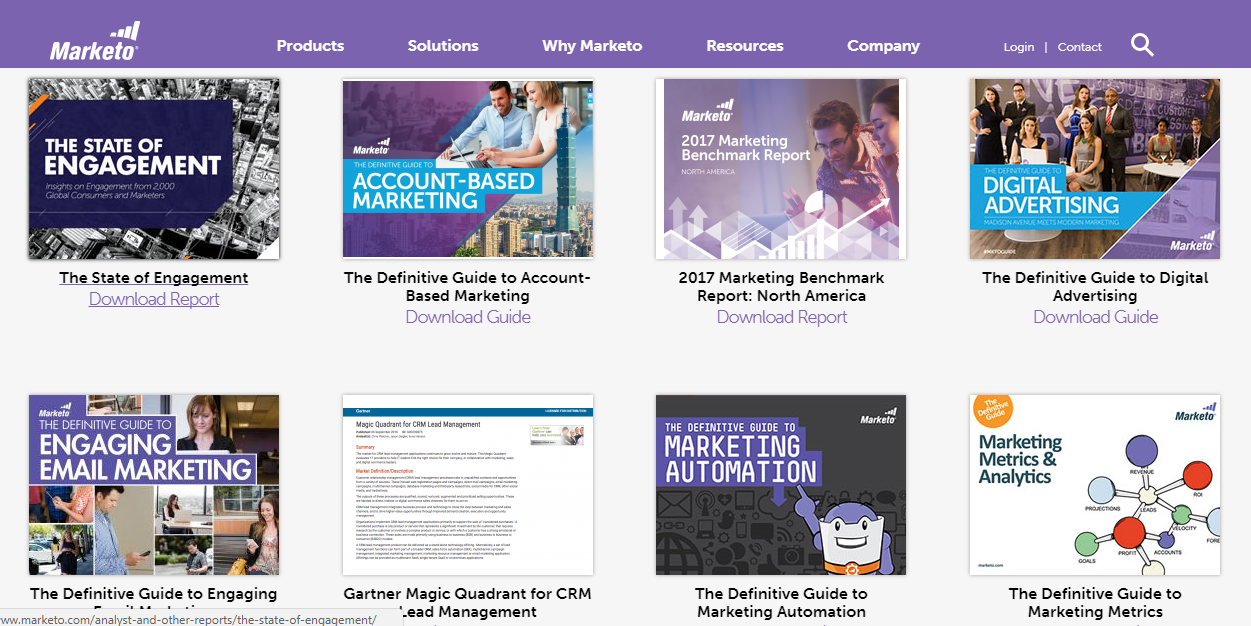
i). Slide Presentations: If you have Microsoft PowerPoint on your computer, then you’re ready to create slide presentations. Slides are for educating the target audience, and they’re very popular in public speaking, webinars, and live events. You can submit your informative slides to SlideShare.net — and if it’s truly valuable, the editors could feature it on the SlideShare homepage — and drive 10,000+ visitors to your website in 24 hours. Here’s an in-depth slide presentation showing the 2017 Content Marketing: Benchmarks, Budgets, and Trends-North America.
[slideshare id=66356990&doc=2017b2bresearchproof-160923205756]
j). Case studies: We use case studies a lot as an agency to show potential clients how we have helped other businesses that are similar to their own to increase traffic, boost rankings, and grow revenue.
A case study could be a written article or testimonial video. The purpose is to take the prospect from Point A (where they have a challenge) to Point C (where the solution is). No other type of content converts better than case studies. Take a look at this case study page from Conversion Rate Experts:
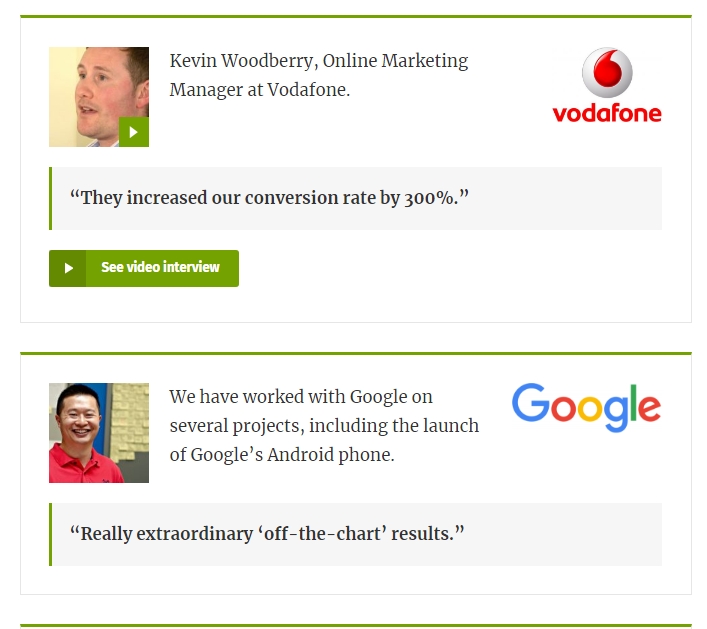
Now you know the different types of content you should be creating. It’s time to learn how to find topics for your content. If you’re stuck and don’t know what to write, create video or podcast, or design an infographic content on, there are two simple ways to go about it:
i). Use HubSpot Blog Ideas Generator: This is a powerful tool that we have used on countless occasions to find great ideas. Simply enter a word or noun in the blank spaces and click on “GIVE ME BLOG IDEAS.”

Next, pick the topics/ideas that you want, modify it or use it exactly as it appears.
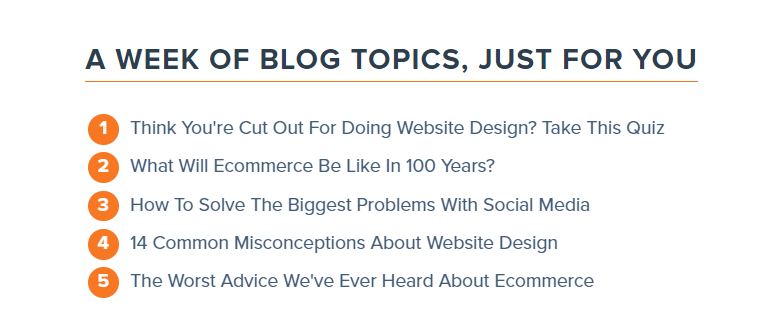
ii). Use Buzzsumo to find viral ideas: The most predictable way to win at content creation and marketing is to capitalize on topics that have proven to be successful online; content that people have shared the most.
Using Buzzsumo tool, you can find the most shared content on social media networks — then piggyback on the data to create your own.
So, head over to Buzzsumo. Enter the topic (e.g., customer retention) you intend to create content on, and click on the “GO!” button:

Next, analyze the titles and articles that have been shared the most on Facebook, Twitter, Pinterest, and more.

Looking closely at the topics, you will agree with me that the two most-shared topics which are relevant to customer retention are:
5 Ways to Improve Customer Retention with Social Media
6 Super-Psychological Triggers to Use for Maximum Customer Retention
With these titles, we can create fresh ones to use in our content. The objective is to exceed what’s already out there. So our fresh titles will be:
- 8 Smart Ways to Improve Customer Retention with Social Media
- 12 Super-Psychological Triggers You Can Use to Retain More Customers
As you can see, we’ve created fresh titles off of the pre-existing ones. It’s not plagiarism, neither is it unfair to do so. Every content marketer and site owner does it — and so should you.
2). Basic SEO Optimization
You must not be an expert coder or have a degree in programming before you can effectively optimize your web page. But, running an online based business without knowing these fundamentals would seem like driving without understanding the various colors of traffic lights.
Now, let’s quickly look at the 4 parts of your website that should be optimized whenever you create content.
Title Tags: This is the online equivalent of newspaper titles or headlines. The title tag shows up in Google search results. As I stated earlier, it’s always important to have your keywords in the title.
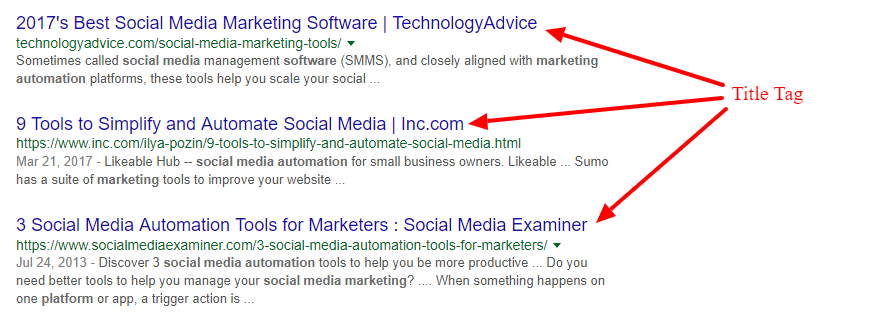
Make sure you include a keyword in your title as this could increase click-through rate. According toSearch Engine Watch, other factors such as Snippet text with calls to action, Sitelinks, Breadcrumbs, Rich Snippets, Brand Recognition, and even tweaking the title a bit can improve CTR.
Meta Description: Meta descriptions are important for search rankings. They show up as an excerpt when Google serves your page to the target audience in the SERPs. It’s also vital to include your target keyword in your meta description.
It’s usually easy to figure out who’s done their SEO homework and who hasn’t by just looking at the meta description:
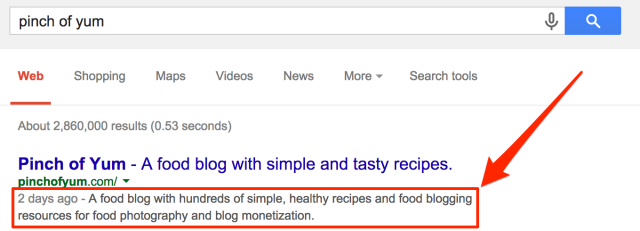
Schema: This is the result of collaboration between different search engines and it’s just a subset of specific HTML tags, which determines how your content is presented on the search engine result pages (SERPs).
The Schema feature is responsible for the Star Ratings, votes, reviews, contact address, and other elements that show up in Google results for a particular website.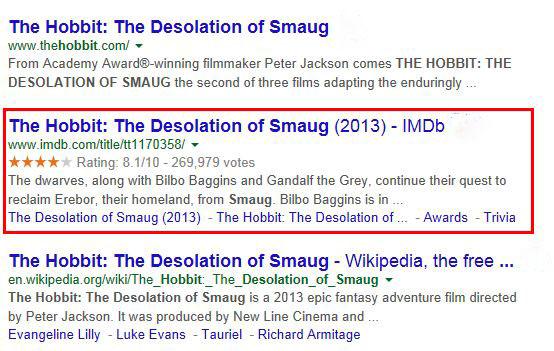
Rand Fishkin, the founder of Moz, has some great information on how to get the best out of Schema. When you’re through, don’t forget to test your page to ensure that everything runs smoothly.
Subheads: Not only do subheads help in formatting and structuring your content and providing your readers with accessible reference points, they also affect SEO significantly.
Compared to your header tags (h1, h2, h3, h4, H5, and H6 tags), subheads don’t have much power in SEO, but they still matter a lot and should, therefore, be used.
3). Site Architecture
The third part of on-page SEO is site architecture. While this part can sometimes get super-techy, there are simple action steps you can take to structure your pages effectively, and thereby improving your organic search rankings. [image source]
 A perfect website architecture results in a tremendous experience for the user as they navigate your web page, via a safe connection, mobile-friendly design, and fast loading times.
A perfect website architecture results in a tremendous experience for the user as they navigate your web page, via a safe connection, mobile-friendly design, and fast loading times.
Make Your Website Easy to Crawl
It’s imperative to make it easy for search engine spiders to crawl your website.
If the spider or Googlebot finds it easier to crawl and index your fresh content pages, then your chances of generating organic visits are high.
Creating a sitemap will make it easier for Google to crawl your website quicker. If your site runs on the WordPress platform, then a simple Google Sitemap Generator Plugin will do the job.
Duplicate Content
There are lots of controversy on the web surrounding “duplicate content,” and the effect it has on your rankings and user experience. As much as possible, create 100% original content — but when you do find a share-worthy content for your audience, go ahead and share it (and credit the primary source).
But a common mistake is to assume everything on your site should be original.
Republishing your guest posts on your own site or re-posting your content on other people’s websites doesn’t hurt your SEO performance, except you do it in a spammy manner. Here’s Matt Cutts, Head of WebSpam at Google explaining how Google handles duplicate content.
[youtube https://www.youtube.com/watch?v=mQZY7EmjbMA?rel=0&controls=0]
If you’re just starting out, my advice to you is to focus on producing unique and engaging content. You don’t even have a huge audience yet, so use unique content to build a community.
Avoid duplicate content. It will do you a world of good. For instance, if after publishing an article on your blog, you then republish the same to a big outlet like LinkedIn Pulse or Medium, it might harm your rankings.
Because Google will index the Medium article first. Come on, these websites have gained so much trust on the web plus they have authoritative domain rankings.
To ensure you don’t get penalized, educate and familiarize yourself with 301 redirects, this is an excellent way to handle duplicate content issues.
Keyword Research for SEO?
Off-Page SEO